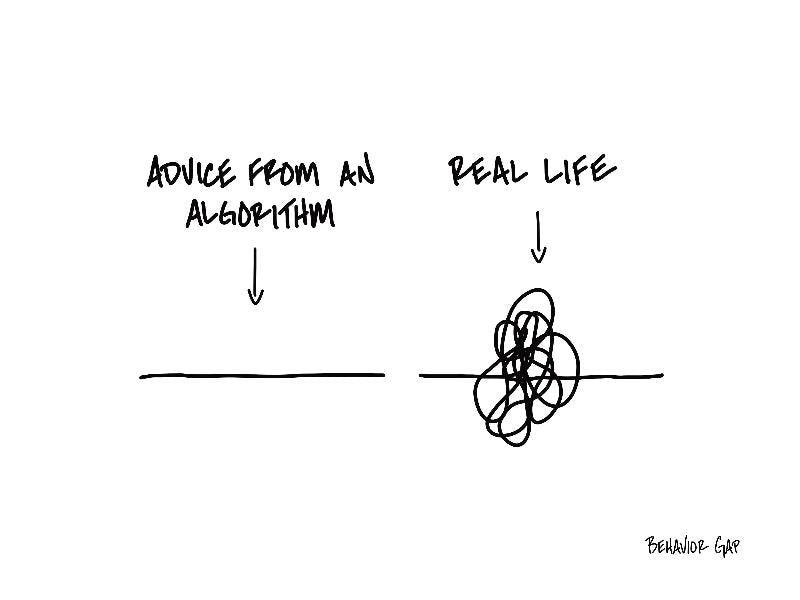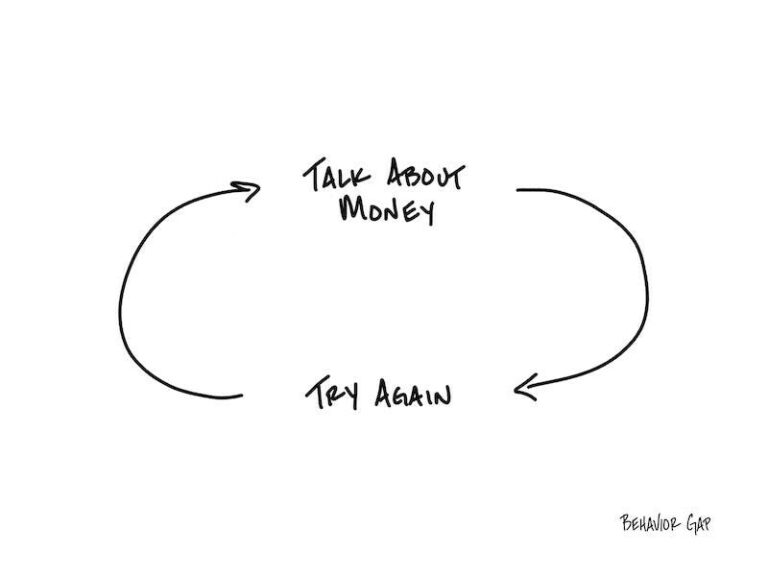
Carl Richards is a Certified Financial Planner™ and creator of the Sketch Guy column, appearing weekly in The New York Times since 2010. The following article is reproduced with permission from his weekly newsletter and his website can be found here.
Greetings, Carl here.
Humans don’t fit into an algorithm.
This is particularly true when we’re talking about humans and their money.
Because “Humans + Money” is a messy little cocktail that economists refer to as a complex adaptive system. “Humans + Money” is complex because cause and effect can only honestly be identified with the benefit of hindsight, and it’s adaptive because our interaction with the system changes it.
Try cramming that into an algorithm.
As much as we would all love a simple formula to tell us what to do with our money—and believe me, there are simple answers, and maybe they’re a good starting place—the more we try to fit the big money questions into a neat little box, the more we find ourselves saying “it depends.”
So what works better, instead?
The only way to navigate in a complex adaptive system is through constant course corrections. From my experience, the steps look like this:
1- Assess.
2- Guess.
3- Act.
4- Repeat.
Now, keep in mind that the cycle rate for these steps is going to be driven by the volatility of your situation. If the situation is relatively stable, you may only cycle through every six months or once per year. But when things blow up, you may be cycling through your financial decisions every day.
The important thing is to remain flexible. Humans don’t fit into an algorithm, so don’t try. Rather than looking for a simple calculator, just acknowledge the reality that life, markets, and money are messy and make yourself as adaptable as you can.
-Carl
P.S. As always, if you want to use this sketch, you can buy it here.


